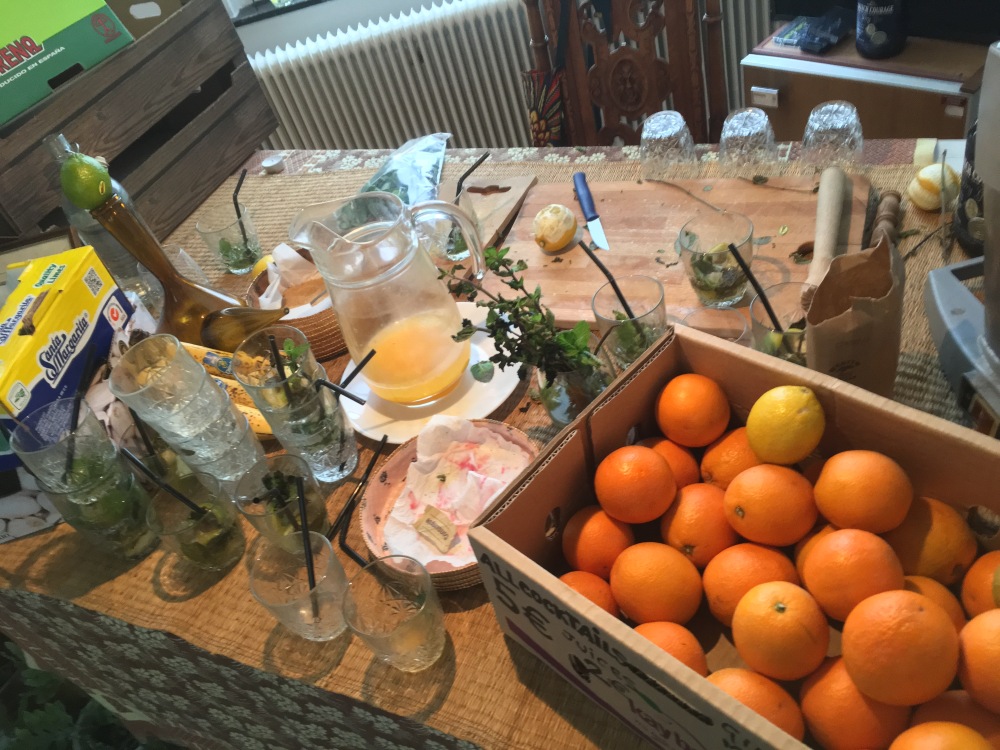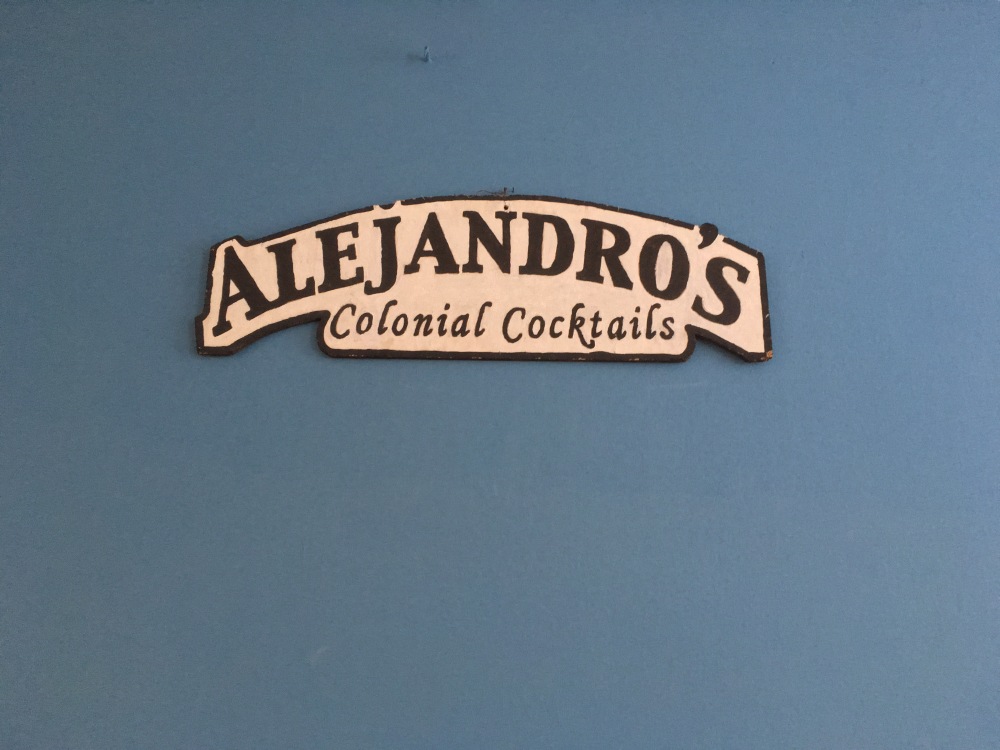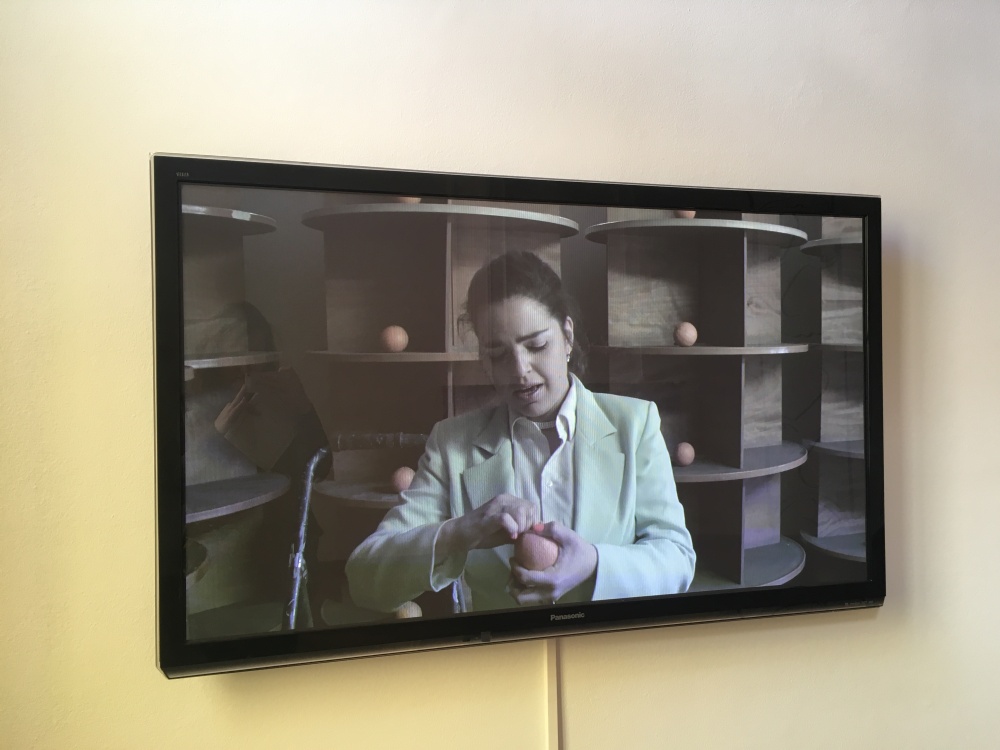‘Currents #5: I spy, I spy a little lie’. Marres House for Contemporary Art, Maastricht. Curated by Isabel van Bos and Evelyn Simons. 13 December 2017 to 4 February 2018.
After a relatively quiet and art-free period over the holidays, it was about time that I immersed myself in some inspiring contemporary art. On a cold Saturday I travelled a whole fifteen minutes to Maastricht, where at Marres House for Contemporary Art the exhibition ‘Currents #5: I spy, I spy a little lie’ is on show.

The first work in the exhibition that I encountered was a very special installation by Alejandro Cerón. He installed a bar in the room, along with a lot of props that remind us of a colonial past. At the opening of the exhibition, he staged a performance called Colonial Cocktails, of which the remnants in the form of empty glasses, squeezed limes and mint leaves and peeled oranges can still be seen. I was told that it had to convey the impression as if it was abandoned in a hurry, with no time to clean up. I visited the exhibition shortly after the opening, so therefore the room was still relatively fresh, but it’s very likely that it doesn’t look that appetising any more with the fruit having gone mouldy and smelly if you visit the exhibition now.
In this work, Cerón tried to uncover the origin of globalisation and global trade. Props in the room remind us of this trade; crates of exotic fruit, a sheet of Vlisco fabric hanging in the door opening, safari hats and a Latin-American guitar. The work is a mixed-media performative installation that combines found objects of a colonial past and present with the physical memories of the performance and the action of mixing the cocktails. By letting the audience participate in and with this work, they become aware of their problematic role in our consumerist society: products come from all across the world, but this process of transport is not always transparent, let alone fair to all parties involved. By drinking these cocktails, they are conforming to these colonialist structures.

Another impressive work, highlighting the politics of individual and between countries, is the video ‘Last Paradess, Maybe Paradise’ (2017) by Nadia Perlov. She was born in Tel Aviv, Israel. The video tells the story of a Jaffa orange. The history of this fruit, a symbol for a colonial past in Palestine and Israel, is very elaborate and goes back to the early twentieth century when Palestine was still a colony of the United Kingdom. Nowadays, the jaffa orange signifies destruction and despair, but current marketing from Israel tries to use the fruit in their campaigns to promote the national identity of the country. In the video, Perlov tries to tell the story about this fruit and ambiguous symbol.

Lastly, I was very impressed by the way the work of Maria Gil Ulldemolins was presented. She is showing her work ‘Traversing the land of Nothing, it is easy to get lost’, a mixed media installation from 2017. A key element to this work is some dozen hollow soap bars in a range of bright colours. These are positioned across the building in groups. (The most ingenious placement was in the wooden support beams in the top floor of the exhibition space.) She speculates about meetings with emptiness and how to deal with life existentially after the death of God. How do we survive in a post-religious, post-truth and post-crisis generation and how can we find salvation in this? The repetition of these empty shapes, in the form of soap bars, has a meditative aspect to it that allows her to reflect even further on these issues.
I know Maria personally and have written about her work before, but despite that, her work gets a whole new dimension in different rooms and in different curatorial contexts. The placement of the bars of soap across the entire exhibition echoes the repetitive pattern of the individual bars, adding another dimension to the work that gives it even more expressive power. I am very excited to see more of her work in new exhibitions over time.
To conclude: this has only been a short summary of three works that have stuck with me after having visited the exhibition. Overall, the exhibition shows perfectly not only how aware the newly graduated artists are of the current world structures, but it also shows their critical minds and offer alternatives to what is currently going on in the world. It is very reassuring to see this many young, critical and intelligent artists, which left me very positive that a different, more honest world is possible in contrast to all the current fake news, wars and shady politics, and contemporary artists will be at the vanguard of this.


